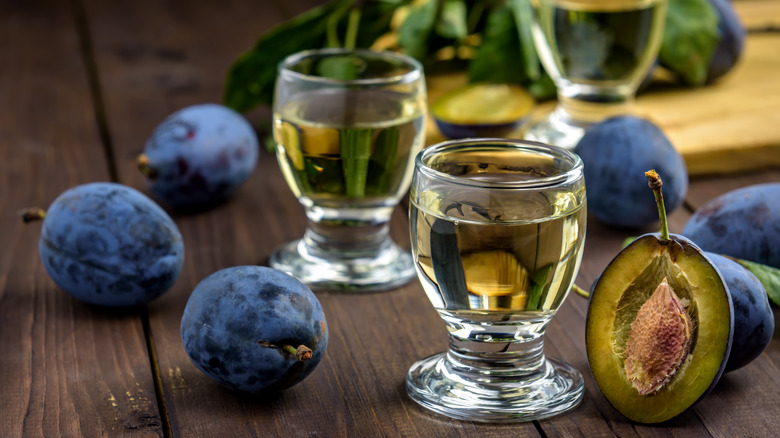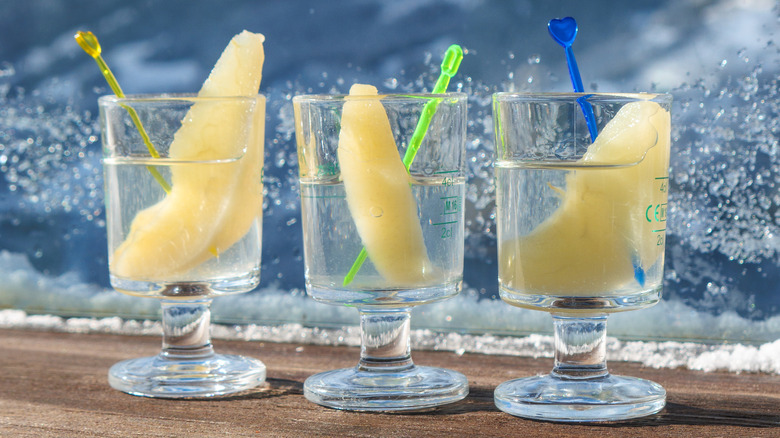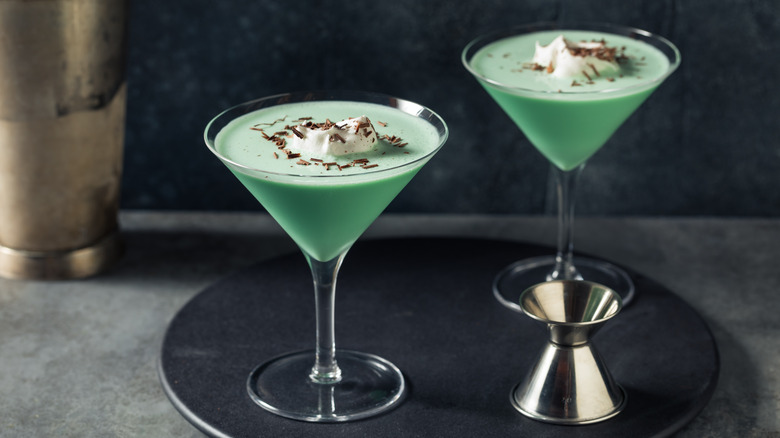Schnaps Vs. Schnapps: The Difference Depends On Where You Live
Understandably, the differences between similarly spelled schnapps and schnaps can easily cause confusion. To some drinkers, the uttered word alone conjures syrupy sweet alcohol that is only good to mix into colorful cocktails. For others, fond memories of an assortment of distilled fruits — pear, cherry, apricot, and plum — and some pretty strong shots of alcohol may come to mind.
Though schnapps is by definition a distilled spirit, the word is used to represent two distinct types of liquor. Whether one is served schnapps or schnaps is primarily determined by where a reveler is sampling the spirit. The term itself represents a broad category, and the various ways in which this flavored booze can be enjoyed continue to be developed. From shot glasses slid across bars to flasks tucked inside mountain ski jackets and fancy cocktails served at nightclubs, schnapps can be found around the world. We're here to help clear up these easily confused types of booze.
When in Europe
Schnaps is the German spelling of a type of strong alcohol that can be traced back to 15th century Europe; distilleries began cranking out the fruit brandies about a century later. Originally, European schnaps were created as medicinal interventions. But once patients discovered that a serving came with side effects similar to other kinds of alcohol, the drink, which is considered a flavored moonshine, gained popularity.
Though schnaps are widely associated with Germany, most come out of Austria. Juices from different kinds of fruits, wheat with herbs, and even potatoes have been distilled into schnaps, though assorted fruit flavors are the most commonly preferred varieties. Schnaps made in Europe are drier, offer more layered flavor profiles than North American varieties, and are sipped after meals or between servings. Most often, schnaps are served chilled in shot glasses to help highlight the unique flavor of the drink, and sometimes the shots are accompanied by pieces of fruit — although herring and Bavarian sausages have been known to follow these boozy beverages as well.
North American varieties
The schnapps found in North America aren't distilled from fruit like the European varieties but are instead made from fruit flavors mixed with grain alcohol. With only 20 to 25 proof alcohol, these schnapps are more of a liqueur and don't resemble the schnaps found in Europe. Dekuyper is a brand frequently found on market shelves, and peppermint and peach flavors are often mixed into cocktails. This kind of alcohol is rarely enjoyed on its own, making for a much better mixer. The sweetened liqueur can be purchased in a variety of flavors like root beer, butterscotch, and apple to be used not only in drink recipes but also in culinary creations like a boozy sauce for pecan croissants or as an ingredient in a peach cake.
If you're staring at an aisle filled with labels, reach for higher quality bottles that serve up 20 to 40% ABV and get ready to experiment at home. Add a dash to a classic Manhattan, serve minty grasshoppers after dinner, or top ice cream with a drizzle of booze to keep guests asking for more.


